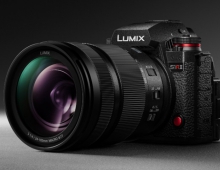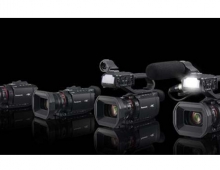
Panasonic Proposes 3D Standard For Blu-ray Disc
Panasonic has reportedly submittted a proposal to the Blu-ray Disc Association (BDA), for a Blu-ray Disc standard that stores movies in 3D.
i
The company's system 3D full HD System includes a Blu-ray Disc player that distributes full high-definition images to left eye and right eye.
Panasonic's BD player that plays back BD onto which 3D images, consisting of left- and right-sided 1080p full HD images, are recorded. The authoring technology used for the creation of the 3D content has been developed by Panasonic Hollywood Laboratory (PHL). The technology allowed recording of 3D images -- consisting of respective left and right 1080p full HD images -- onto a single, standard BD.
The BD player decodes and reproduces the left and right full HD image data recorded to the BD in real time.
By wearing active shutter glasses that work in synchronization with an HD TC screen, the viewer is able to experience 3D images formed with twice the volume of information as regular full HD images, and enjoy them together with high quality surround sound.
The Japanese company had showcased its system at Ceatec Japan last September.
According to the Nikkei Electronics Asia pblication, the company has submittted its 3D system to the Blu-ray disc Association for evaluation, in order to be approved as a Blu-ray disc standard. Once standardized, the technology could be comercially adopted in 2010. Panasonic is also considering submitting a proposal for a High-Definition Multimedia Interface (HDMI) standard capable of transmitting 3D imagery.
Panasonic proposed its 3D standard ahead of other firms in order to prevent patent conflict related to other 3D imagery standards. US film companies are beefing up their film production stances, preparing to handle the 3D images they hope will provide massive revenues; at the same time they are developing packaged 3D media for the home to create a new revenue stream. This trend has stirred up considerable activity in the background, with many companies scurrying to have their own proprietary 3D imagery standards adopted by the BDA.
Philips had also demonstrated its 3D Blu-ray proposal at the at IFA 2008 show in Berlin last August. Philips' proposal was basd on the 2D-plus-Depth format applied to Blu-ray. According to Philips, its 3D Blu-ray discs can be enjoyed on both stereoscopic (special glasses needed) as well as auto-stereoscopic 3D displays, which do not require glasses.
Panasonic's BD player that plays back BD onto which 3D images, consisting of left- and right-sided 1080p full HD images, are recorded. The authoring technology used for the creation of the 3D content has been developed by Panasonic Hollywood Laboratory (PHL). The technology allowed recording of 3D images -- consisting of respective left and right 1080p full HD images -- onto a single, standard BD.
The BD player decodes and reproduces the left and right full HD image data recorded to the BD in real time.
By wearing active shutter glasses that work in synchronization with an HD TC screen, the viewer is able to experience 3D images formed with twice the volume of information as regular full HD images, and enjoy them together with high quality surround sound.
The Japanese company had showcased its system at Ceatec Japan last September.
According to the Nikkei Electronics Asia pblication, the company has submittted its 3D system to the Blu-ray disc Association for evaluation, in order to be approved as a Blu-ray disc standard. Once standardized, the technology could be comercially adopted in 2010. Panasonic is also considering submitting a proposal for a High-Definition Multimedia Interface (HDMI) standard capable of transmitting 3D imagery.
Panasonic proposed its 3D standard ahead of other firms in order to prevent patent conflict related to other 3D imagery standards. US film companies are beefing up their film production stances, preparing to handle the 3D images they hope will provide massive revenues; at the same time they are developing packaged 3D media for the home to create a new revenue stream. This trend has stirred up considerable activity in the background, with many companies scurrying to have their own proprietary 3D imagery standards adopted by the BDA.
Philips had also demonstrated its 3D Blu-ray proposal at the at IFA 2008 show in Berlin last August. Philips' proposal was basd on the 2D-plus-Depth format applied to Blu-ray. According to Philips, its 3D Blu-ray discs can be enjoyed on both stereoscopic (special glasses needed) as well as auto-stereoscopic 3D displays, which do not require glasses.





















